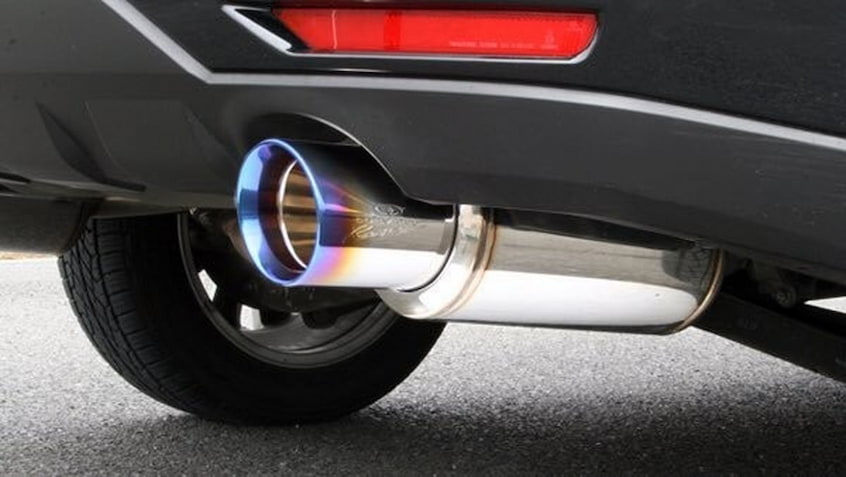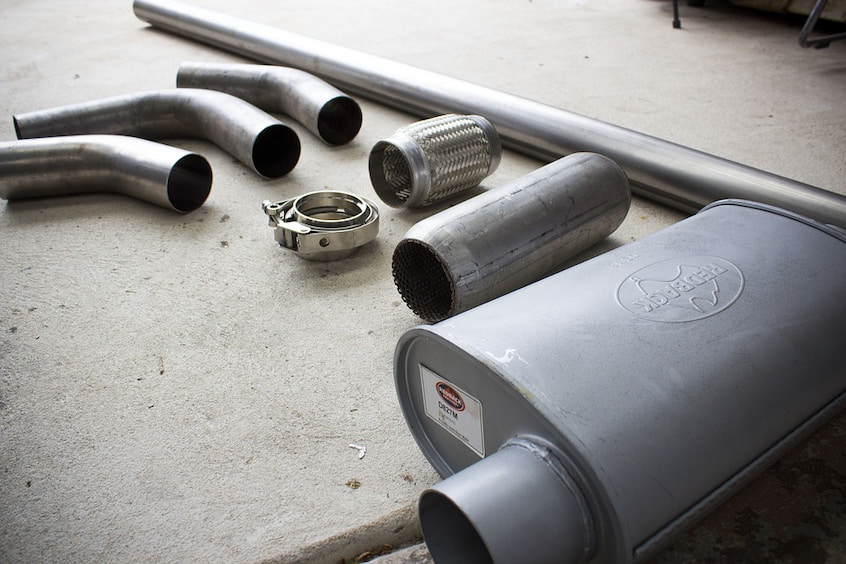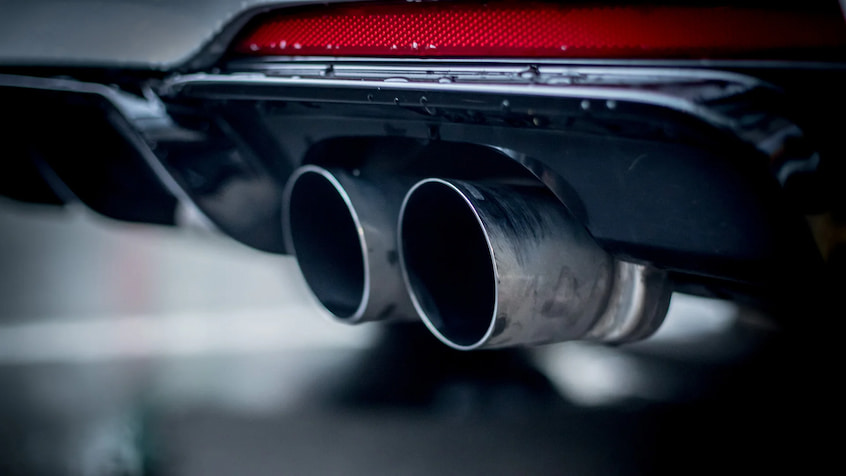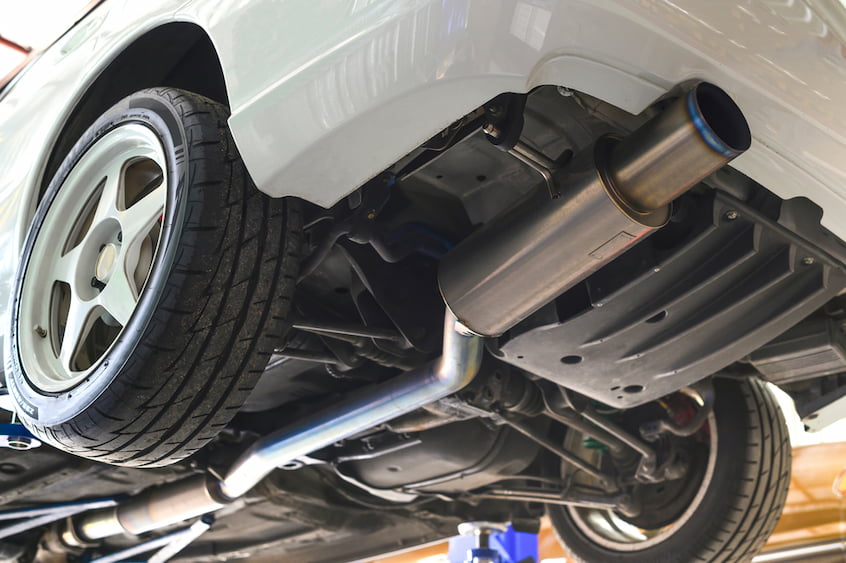
Automotive Exhaust System Upgrade: A Little Bit of Aftermarket Mufflers
When it comes to building a high-performance exhaust system, it doesn’t take long to realize that the type, design, and even location of your muffler can make or break everything.
The fact that it’s called a muffler doesn’t leave any question about what it’s designed to do: to muffle and restrict engine noise. The inherent dilemma for performance enthusiasts and engine builders, however, is that the sound waves a muffler needs to restrict are a side effect of the power they want the engine to create.
Finding ways to get maximum performance at acceptable noise levels is a challenge that designers in the automotive industry have wrestled with for decades. Fortunately, there’s a trusted core of high-performance innovators on the market that enthusiasts and builders know are committed to flexibly helping them find that optimal balance for today’s engines.
Contents
Get High Performance with Balanced, Low Restriction Mufflers
Let’s be honest: if you’re reading this article, you already know that there’s more to exhaust tuning than just big pipes and shiny tips. It’s a science, and the design and engineering of low restriction quiet mufflers is the key to making the high flowing exhaust systems found on today’s cars and trucks.

Modern aftermarket mufflers are designed to deliver combined benefits that previous generations of mufflers couldn’t, and weren’t envisioned to, including:
· Enhanced sound. Modern exhaust mufflers are tasked with keeping engine noise close to lawn mower levels at all RPMs, while continuing to produce a rich tone that’s identifiable with performance.
· Optimized flow. Modern mufflers are required to simultaneously reduce noise while still allowing the increase in exhaust gas scavenging needed to produce more horsepower.
· Improved economy. Modern performance mufflers are expected to keep back pressure low at all times throughout the system to allow the engine to breathe better.
The fact is, a modern high-performance muffler is capable of single-handedly producing the kinds of specialised results that previous generations of muffler/resonator, and even four muffler combinations were needed to accomplish. That’s why when you’re looking at replacing your vehicle’s OE exhaust system, you want to be sure to get a durable, dyno-proven muffler that’s able to provide the best compromise of power, sound, and economy.
3 Types of Low Restriction Mufflers to Choose From
When it comes to the specifics of both OE and low restriction aftermarket mufflers Australia sets out its guidance on applicability in Australian Design Rule (ADR) 83/00. Based on internal construction, however, there are three main types of mufflers you’ll find when you’re shopping:

· Chambered type. A chamber-style exhaust muffler consists of internal resonance chambers that are arranged to trap and cancel out sound waves while allowing the exhaust gases to pass. These old school, “V8-style” mufflers are known for their good breathing and distinctive grumble, especially at idle.
· Turbo type. Turbo-type mufflers are made up of a core of S-shaped perforated baffles filled with fiberglass packing that absorbs sound waves at various resonances without restricting the exhaust gases. These mufflers are very good at sound suppression without choking off performance.
· Straight through type. By combining resonance chambering with fiberglass packing, straight through performance exhaust mufflers are a combination of the two other types. Straight through mufflers allow excellent flow-through scavenging and their tone increases along with engine RPM.
Depending on how you use your vehicle and how much attention you anticipate drawing with your aftermarket exhaust muffler, each type has its own advantages. For a smooth, noticeable tone and gentle boost in throttle response on a car or truck that you drive everyday, a cutting-edge, straight through type is going to be perfect. However, if you want a more aggressive note and a bigger jump in low end power and acceleration for mixed street/strip duty on weekends, a chambered muffler is the one you want.
Get Familiar with Your Muffler’s Shape and Offset
Top quality, low restriction aftermarket exhaust mufflers are made from corrosion resistant stainless steel, and can vary in length, width, and height. They can also be oval, round, or cylindrical shaped which, more crucially than their size, is essential for determining their inlet and outlet configurations.

Low restriction muffler inlet configurations can be either centred or offset, and 2.5” and 3.0” are the most common pipe diameters. Your choices in outlet configurations are much broader though, and you can choose from:
· Centred (a single outlet pipe lined up directly across from the inlet);
· Offset (a single outlet pipe positioned diagonally across from the inlet);
· Offset opposite side (a pair of outlet pipes on the opposite side of the inlet); and,
· Offset same side (a single outlet and inlet pipe both on the same side).
These broad differences in muffler configurations allow exhaust tuners to use either standard or custom mounting options, or to take advantage of different types of high-performance exhaust tips or tailpipes. A good low restriction muffler gives you every opportunity to create the ideal system for your vehicle, and that includes accommodating all types of turbo back and cat back plumbing as well.
Thoughts to Keep in Mind If You’re Building a Custom Exhaust System
Getting the most efficient use out of your low resistance performance exhaust muffler also means ensuring it’s optimally positioned, with all your connected plumbing maximized. Mufflers typically reside near the rear of cars and trucks because that’s where the most clearance tends to be, but mid-mounted mufflers aren’t uncommon on custom exhaust systems where longer tailpipes give a smoother exhaust note.

Positioning can also affect interior resonances, heat radiation, and the placement of other exhaust components such as crossovers and resonators. These are non-issues if you find a good performance muffler online to swap out with an OE one. If you’re looking at low restriction mufflers online with the intent of crafting a true high performance exhaust system, though, these are considerations that you’ll want to keep in mind.
The Final Word
Make no mistake: a staggering amount of aftermarket research goes into exhaust systems. That’s because no matter how much power an engine builder or enthusiast is able to squeeze out of an engine, there will always be just a little bit more power that can be found in retuning the exhaust system.
The key, however, is to get as much power out of the system as possible, but to do it as quietly and as efficiently as possible. That’s what makes the developments in the latest generation of low restriction quiet mufflers so special. They’re designed and built to outperform their predecessors by leaps and bounds; and regardless of whether you’re just replacing a worn-out muffler or putting in an entirely new system, you’re going to notice the difference it makes on the first drive.

